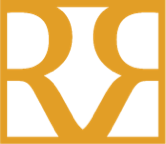A rhinoplasty procedure or nose job can be a wonderfully powerful procedure to improve the shape and appearance of someone’s nose. It can also improve breathing and balance, and restore proportions in the face.
When designed and performed properly for the right patients, a rhinoplasty can provide life-long aesthetic and functional benefits. As with any surgical procedure, complications can occur. Below are three negative rhinoplasty results you should avoid.
1) Collapsed Internal Nasal Valve:
The internal nasal valve is formed by the angle of the upper lateral cartilages (cartilage sidewalls) and the septum. This is an important part of the function of the nose and if it’s not respected or properly understood it can lead to breathing issues. The most common cause of this is when the “hump” from the bridge of the nose is reduced. If these cartilages and their relationship to each other are not preserved properly, breathing issues will develop with time. Often along with the breathing problems and inverted “V” deformity also develops. This is essentially the outline of the nasal bones at the bottom being noted more than the sidewalls of the nose since the cartilages that used to be there have shifted from surgery.
2) Over-Resection of Lower Lateral Cartilages:
The lower lateral cartilages form the nostrils and the tip of the nose, as well as the columella. When the tip is refined or shaped, cartilage of the lower lateral cartilages can be reshaped or removed. For some individuals, removal of any cartilage or too much cartilage removal can result in “notching” of the nostrils. When this occurs the rim of the nostrils appears too high and exposure of the nostril entrance itself increases. Identifying which patients need cartilage shaping versus cartilage removal is key to preventing this problem. Some patients may even need cartilage reinforcement in this area if their cartilages are particularly soft.
3) Over or Under Rotated Nose:
The angle between the columella and the upper lip is called the nasal-labial angle. Having the proper nasal-labial angle is determined by the features of the face and the characteristics of the nose such as length and projection. Many small decisions and surgical maneuvers can be performed to affect this. Often, over rotation is more common as the plastic surgeon tries to make the nose smaller. An understanding of the forces that keep the nose stable is an important part of preventing either under or over rotation of the nose.
Want to learn more?
Learn more about Scottsdale plastic surgeon Dr. Repta’s rhinoplasty procedure by clicking below and visiting his comprehensive rhinoplasty website page.
